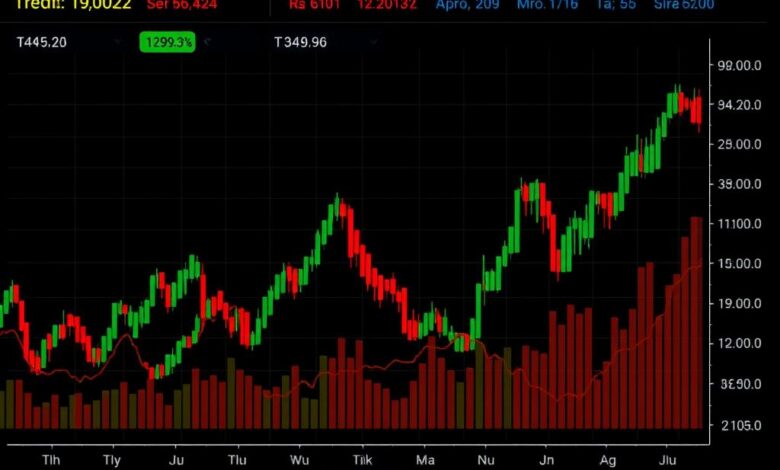How to read a company’s financial report for investing

Focus on key ratios derived from balance sheets and income statements to gauge a company’s performance. Pay particular attention to the price-to-earnings (P/E) ratio; this figure is pivotal in assessing whether a stock is undervalued or overvalued. Combine it with the debt-to-equity ratio to understand how much leverage a company uses compared to its equity, revealing its financial stability and risk profile.
Valuation techniques such as discounted cash flow (DCF) analysis provide deeper insights into future earnings potential. This method allows you to estimate an asset’s worth based on projected cash flows, which can significantly enhance your understanding of investment opportunities. Always compare these valuations against industry benchmarks to ensure comprehensive assessment.
Incorporate trend analysis by examining historical data alongside current ratios. This approach helps identify patterns that may influence future performance, enabling you to make decisions rooted in empirical evidence rather than speculation. Leverage these analytical tools to transform raw data into actionable intelligence for your portfolio strategy.
Understanding Balance Sheets
Focus on the balance sheet’s components for an accurate valuation assessment. Analyze assets, liabilities, and equity to gain insights into the company’s financial health.
- Assets: Evaluate current and non-current assets. Current assets such as cash, accounts receivable, and inventory indicate short-term liquidity. Non-current assets like property and equipment reflect long-term investment potential.
- Liabilities: Distinguish between current and long-term liabilities. Current liabilities include payables and short-term debt, while long-term liabilities encompass loans and bonds. This differentiation helps assess the risk level associated with debt obligations.
- Equity: Examine shareholder equity for insights on retained earnings versus dividends paid. A higher retained earnings figure suggests reinvestment in growth opportunities, which may enhance future earnings.
Assess the ratios derived from these statements to deepen your analysis:
- Debt-to-Equity Ratio: Calculate total liabilities divided by shareholder equity. A lower ratio indicates less risk in terms of leverage.
- Current Ratio: Divide current assets by current liabilities to evaluate liquidity. Ratios above 1 suggest sufficient coverage of short-term obligations.
- Return on Equity (ROE): Determine net income divided by average shareholder equity to gauge profitability relative to owner investments.
Dive into quarterly changes in these metrics to spot trends that may impact earnings forecasts and overall business strategy. Regular analysis aids in making informed choices about potential engagements with a company’s stock or bonds.
The balance sheet offers a snapshot of financial stability; leverage this information alongside other documents for a holistic view of the firm’s economic position.
Interpreting Income Statements
Analyze earnings per share (EPS) to gauge profitability. A rising EPS indicates a company’s ability to generate profit relative to its shares outstanding, enhancing valuation metrics.
Focus on revenue trends. Consistent growth in top-line figures suggests a robust business model. Compare revenue against industry averages to assess competitive positioning.
Scrutinize operating income. This figure reflects the efficiency of core operations, excluding non-operational factors. A healthy operating margin, calculated as operating income divided by revenue, signals effective cost management.
Examine net income and its trajectory. Fluctuations can signal operational issues or extraordinary items affecting profits. Use this data to adjust forecasts and reevaluate company potential.
Utilize key ratios such as return on equity (ROE) and return on assets (ROA). These ratios help understand how well a company utilizes shareholder equity and total assets to generate earnings.
Be cautious of one-time gains or losses that can distort true performance. Adjusting net income for these items reveals underlying profitability trends.
Assess the gross profit margin, which is derived from subtracting cost of goods sold (COGS) from total revenue and dividing by total revenue. This ratio provides insights into pricing strategies and production efficiency.
Lastly, consider year-over-year comparisons to identify patterns in financial health. Consistent improvement in earnings statements strengthens confidence in future growth prospects.
Analyzing Cash Flow Reports
Focus on the operating cash flow section to gauge a company’s core earnings power. This metric reveals how well a firm generates cash from its ongoing business activities, offering insights into sustainability and financial health.
Evaluate free cash flow as an indicator of financial flexibility. This figure represents the cash available after capital expenditures, crucial for assessing a company’s ability to pursue growth opportunities, pay dividends, or reduce debt.
Use liquidity ratios derived from cash flow statements to analyze short-term financial stability. The current ratio and quick ratio help assess whether a company can meet its obligations without relying on selling inventory.
Examine trends over multiple periods; consistency in positive cash flow signals operational efficiency. Look for fluctuations that may indicate underlying issues or seasonal variations affecting performance.
Compare cash flow with net income. Discrepancies may suggest accounting practices that inflate earnings without corresponding cash generation, raising red flags about real profitability.
Integrate analysis of investing and financing activities to understand capital allocation strategies. High levels of investment in growth-related areas paired with prudent financing choices can indicate a well-managed entity poised for long-term success.
Incorporate peer comparisons within the same industry. Ratios such as cash flow margin provide context on performance relative to competitors, highlighting strengths or weaknesses that impact market positioning.
A comprehensive approach to analyzing these statements aids in making informed choices regarding potential acquisitions or holdings, supporting strategic portfolio management.
Evaluating Key Financial Ratios
Focus on the price-to-earnings (P/E) ratio to gauge market valuation. A lower P/E might indicate undervaluation, while a higher P/E suggests overvaluation. Compare this ratio with industry averages for context.
Utilize the current ratio to assess liquidity and short-term financial health. A ratio above 1 implies sufficient assets to cover liabilities; however, excessively high values could signal inefficiencies in asset management.
The debt-to-equity (D/E) ratio offers insights into leverage. A higher D/E indicates greater reliance on borrowed funds, increasing risk during downturns. Balance is key–too much debt can jeopardize stability.
Return on equity (ROE) reflects profitability relative to shareholders’ equity. Consistent, high ROE indicates effective management and robust earnings growth potential. Aim for companies with an ROE outperforming peers.
Examine the gross margin percentage as a measure of production efficiency. Higher margins signify better cost control and pricing power, influencing overall profitability. Analyze trends over time for deeper insights.
Consider the price-to-book (P/B) ratio to determine if a stock is trading below or above its intrinsic value. A P/B under 1 may reveal hidden value; however, investigate underlying reasons for low valuation before making assumptions.
Assessing these ratios collectively provides a clearer picture of a company’s financial standing and future prospects, aiding in informed choices regarding asset allocation and risk management strategies.







